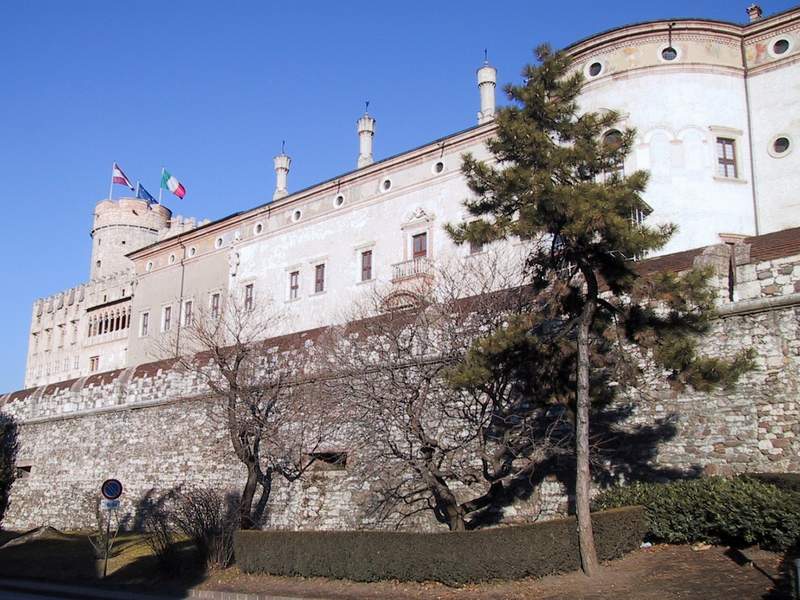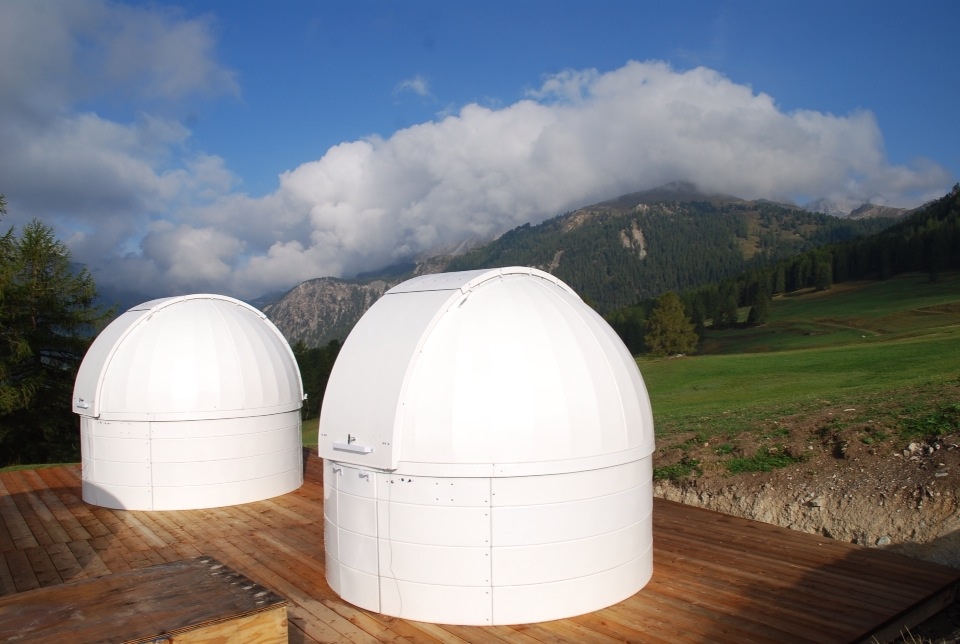|
Taufers Im Münstertal
Taufers im Münstertal (; it, Tubre ; rm, Tuer) is a ''comune'' (municipality) in South Tyrol in northern Italy, located about west of the city of Bolzano, on the border with Switzerland. Geography As of November 30, 2010, it had a population of 964 and an area of .All demographics and other statistics: Italian statistical institute Istat. Taufers borders the following municipalities: Glurns, Mals, Prad am Stilfser Joch, Stilfs, Lü (Switzerland), Müstair (Switzerland), Santa Maria Val Müstair (Switzerland), Scuol (Switzerland), and Valchava (Switzerland). Frazioni The municipality of Taufers contains the ''frazioni'' (subdivisions, mainly villages and hamlets) Pundweil (Pontevilla) and Rifair (Rivaira). History Coat-of-arms The shield is party per bend, the first part of gules and the second fusilly of argent and azure. It is the insignia of Lords of ''Reichenberg'' who lived in the local castle since 1373. The emblem was granted in 1967. Society Linguistic distribu ... [...More Info...] [...Related Items...] OR: [Wikipedia] [Google] [Baidu] |
Trentino-Alto Adige/Südtirol
it, Trentino (man) it, Trentina (woman) or it, Altoatesino (man) it, Altoatesina (woman) or it, Sudtirolesegerman: Südtiroler (man)german: Südtirolerin (woman) , population_note = , population_blank1_title = Official languages , population_blank1 = ItalianGerman (South Tyrol) , population_blank2_title = Other languages , population_blank2 = in some municipalities:Ladin MochenoCimbrian , demographics_type1 = Citizenship , demographics1_footnotes = , demographics1_title1 = Italian , demographics1_info1 = 93% , timezone1 = CET , utc_offset1 = +1 , timezone1_DST = CEST , utc_offset1_DST = +2 , postal_code_type = , postal_code = , area_code_type = ISO 3166 code , area_code = IT-32 , blank_name_sec1 ... [...More Info...] [...Related Items...] OR: [Wikipedia] [Google] [Baidu] |
Müstair
Müstair is a village in the Val Müstair municipality in the district of Inn in the Swiss canton of Graubünden. In 2009 Müstair merged with Fuldera, Lü, Switzerland, Santa Maria Val Müstair, Tschierv and Valchava to form Val Müstair.Amtliches Gemeindeverzeichnis der Schweiz published by the Swiss Federal Statistical Office accessed 23 September 2009 The easternmost point of Switzerland, at Piz Chavalatsch, is located in the municipality. The main tourist attraction in the area is the |
Azure (heraldry)
In heraldry, azure ( , ) is the tincture with the colour blue, and belongs to the class of tinctures called "colours". In engraving, it is sometimes depicted as a region of horizontal lines or else is marked with either az. or b. as an abbreviation. The term azure shares origin with the Spanish word "azul", which refers to the same color, deriving from hispanic Arabic ''lazawárd'' the name of the deep blue stone now called lapis lazuli. The word was adopted into Old French by the 12th century, after which the word passed into use in the blazon of coats of arms. As an heraldic colour, the word ''azure'' means "blue", and reflects the name for the colour in the language of the French-speaking Anglo-Norman nobles following the Norman Conquest of England. A wide range of colour values is used in the depiction of azure in armory and flags, and in common usage it is often referred to simply as 'blue'. In addition to the standard blue tincture called azure, there is a lighter blue ... [...More Info...] [...Related Items...] OR: [Wikipedia] [Google] [Baidu] |
Argent
In heraldry, argent () is the tincture of silver, and belongs to the class of light tinctures called "metals". It is very frequently depicted as white and usually considered interchangeable with it. In engravings and line drawings, regions to be tinctured ''argent'' are either left blank, or indicated with the abbreviation ''ar''. The name derives from Latin ''argentum'', translated as "silver" or "white metal". The word ''argent'' had the same meaning in Old French ''blazon'', whence it passed into the English language. In some historical depictions of coats of arms, a kind of silver leaf was applied to those parts of the device that were argent. Over time, the silver content of these depictions has tarnished and darkened. As a result, it can sometimes be difficult to distinguish regions that were intended as "argent" from those that were " sable". This leaves a false impression that the rule of tincture has been violated in cases where, when applied next to a dark colour, ... [...More Info...] [...Related Items...] OR: [Wikipedia] [Google] [Baidu] |
Gules
In heraldry, gules () is the tincture with the colour red. It is one of the class of five dark tinctures called "colours", the others being azure (blue), sable (black), vert (green) and purpure (purple). In engraving, it is sometimes depicted by hatching of vertical lines. In tricking—abbreviations written in areas to indicate their tinctures—it is marked with gu.. Etymology The term ''gules'' derives from the Old French word , literally "throats" (related to the English ''gullet''; modern French ), but also used to refer to a fur neckpiece, usually made of red fur. A.C. Fox-Davies states that the term originates from the Persian word , "rose", but according to Brault, there is no evidence to support this derivation. Examples Gules is the most widely used heraldic tincture. Through the sixteenth century, nearly half of all noble coats of arms in Poland had a field gules with one or more argent charges on them. Examples of coats of arms consisting of purely a red s ... [...More Info...] [...Related Items...] OR: [Wikipedia] [Google] [Baidu] |
Division Of The Field
In heraldry, the field (background) of a shield can be divided into more than one area, or subdivision, of different tinctures, usually following the lines of one of the ordinaries and carrying its name (e.g. a shield divided in the shape of a chevron is said to be parted "per chevron"). Shields may be divided this way for ''differencing'' (to avoid conflict with otherwise similar coats of arms) or for purposes of '' marshalling'' (combining two or more coats of arms into one), or simply for style. The lines that divide a shield may not always be straight, and there is a system of terminology for describing patterned lines, which is also shared with the heraldic ordinaries. French heraldry takes a different approach in many cases from the one described in this article. Common divisions of the field Common partitions of the field are: * ''parted'' (or ''party'') ''per fess'' (halved horizontally) * ''party per pale'' (halved vertically) * ''party per bend'' (diagonally fr ... [...More Info...] [...Related Items...] OR: [Wikipedia] [Google] [Baidu] |
Frazione
A ''frazione'' (plural: ) is a type of subdivision of a ''comune'' (municipality) in Italy, often a small village or hamlet outside the main town. Most ''frazioni'' were created during the Fascist era (1922–1943) as a way to consolidate territorial subdivisions in the country. In the autonomous region of the Aosta Valley, a ''frazione'' is officially called an ''hameau'' in French. Description Typically the term ''frazioni'' applies to the villages surrounding the main town (''capoluogo'') of a ''comune''. Subdivision of a ''comune'' is optional; some ''comuni'' have no ''frazioni'', but others have several dozen. The ''comune'' usually has the same name of the ''capoluogo'', but not always, in which case it is called a ''comune sparso''. In practice, most ''frazioni'' are small villages or hamlets, occasionally just a clump of houses. Not every hamlet is classified as a ''frazione''; those that are not are often referred to as ''località'', for example, in the telephone boo ... [...More Info...] [...Related Items...] OR: [Wikipedia] [Google] [Baidu] |
Valchava
Valchava is a village in the Val Müstair (''Müstair valley'') of the canton of Graubünden (Grisons), Switzerland. It was an independent municipality in the district of Inn until on 1 January 2009 Valchava merged with Fuldera, Lü, Müstair, Santa Maria Val Müstair and Tschierv to form Val Müstair.Amtliches Gemeindeverzeichnis der Schweiz published by the Swiss Federal Statistical Office accessed 23 September 2009 History Valchava is first mentioned in 1331 as ''Valchava''.Geography Valchava has an area, , of . Of this area, 46% is used for agricultural purposes, while 33.9% is forested. Of the rest of the land, 1.4% is settled (buildings or roads) and the remainder (18.7%) is non-product ...[...More Info...] [...Related Items...] OR: [Wikipedia] [Google] [Baidu] |
Scuol
Scuol () is a municipality in the Engiadina Bassa/Val Müstair Region in the Swiss canton of Grisons. The official language in Scuol is Romansh. On 1 January 2015 the former municipalities of Ardez, Guarda, Tarasp, Ftan and Sent merged into Scuol. Name The official name has undergone several changes in the 20th century: * Until 1943, the official name of the municipality was ''Schuls''. * In 1943, it was changed to ''Bad Scuol/Schuls''. * In 1970 ''Schuls'' was dropped as an official name, leaving only ''Bad Scuol''. * In 1999 ''Bad'' was dropped, leaving today's name, ''Scuol.'' History Scuol is first mentioned in 1095 as ''Schulles''. The Neo-Renaissance style Grand Hotel Waldhaus Vulpera in Scuol-Tarasp with Sgraffito-Elements was opened on 8 June 1897 and was one of the first addresses in the Swiss Alps and was a major Belle Époque monument in Europe. Geography After the 2015 merger Scuol had an area of . Before the merger Scuol had an area, (as of the 2004/09 sur ... [...More Info...] [...Related Items...] OR: [Wikipedia] [Google] [Baidu] |
Santa Maria Val Müstair
Santa Maria Val Müstair ( rm, Soncha Maria) is a village in the Val Müstair municipality in the district of Inn in the Swiss canton of Graubünden. In 2009 Santa Maria Val Müstair merged with Lü, Müstair, Fuldera, Tschierv and Valchava to form the municipality of Val Müstair.Amtliches Gemeindeverzeichnis der Schweiz published by the Swiss Federal Statistical Office accessed 23 September 2009 History Sta. Maria Val Müstair is first mentioned in 1167–70 as ''die Kapelle Sancte Mariae in Silvaplana''.Geography [...More Info...] [...Related Items...] OR: [Wikipedia] [Google] [Baidu] |
Lü, Switzerland
Lü is a village in the Val Müstair municipality in the district of Inn in the Swiss canton of Graubünden. In 2009 Lü merged with Fuldera, Müstair, Santa Maria Val Müstair, Tschierv and Valchava to form the municipality of Val Müstair.Amtliches Gemeindeverzeichnis der Schweiz published by the Swiss Federal Statistical Office accessed 23 September 2009 History Lü is first mentioned in 1466 as ''Lug''.Geography  Lü had an area, , of . Of this area, 45.5% is used for agricultural purpo ...
Lü had an area, , of . Of this area, 45.5% is used for agricultural purpo ...
[...More Info...] [...Related Items...] OR: [Wikipedia] [Google] [Baidu] |
South Tyrol
it, Provincia Autonoma di Bolzano – Alto Adige lld, Provinzia Autonoma de Balsan/Bulsan – Südtirol , settlement_type = Autonomous province , image_skyline = , image_alt = , image_caption = , image_flag = Flag_of_South_Tyrol.svg , flag_alt = , image_shield = Suedtirol CoA.svg , shield_size = x100px , shield_alt = Coat of arms of Tyrol , anthem = , image_map = Bolzano in Italy.svg , map_alt = , map_caption = Map highlighting the location of the province of South Tyrol in Italy (in red) , coordinates = , coordinates_footnotes = , subdivision_type = Country , subdivision_name = Italy , subdivision_type1 = R ... [...More Info...] [...Related Items...] OR: [Wikipedia] [Google] [Baidu] |







